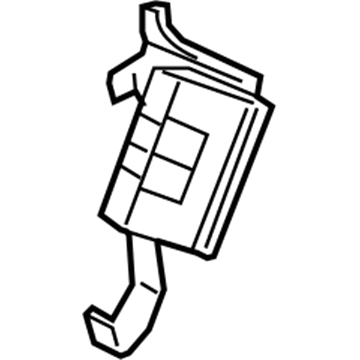×
ToyotaParts- Hello
- Login or Register
- Quick Links
- Live Chat
- Track Order
- Parts Availability
- RMA
- Help Center
- Contact Us
- Shop for
- Toyota Parts
- Scion Parts
My Garage
My Account
Cart
OEM 2005 Toyota 4Runner ABS Control Module
Anti Lock Brake Control Module- Select Vehicle by Model
- Select Vehicle by VIN
Select Vehicle by Model
orMake
Model
Year
Select Vehicle by VIN
For the most accurate results, select vehicle by your VIN (Vehicle Identification Number).
1 ABS Control Module found
2005 Toyota 4Runner Control Module
Part Number: 89540-35320$1902.44 MSRP: $2394.81You Save: $492.37 (21%)Ships in 1-3 Business DaysProduct Specifications- Other Name: Computer Assembly, Skid; ABS Control Module; Computer Assembly, Skid Control
- Part Name Code: 89540
- Item Weight: 1.60 Pounds
- Item Dimensions: 8.2 x 6.2 x 3.6 inches
- Condition: New
- Fitment Type: Direct Replacement
- SKU: 89540-35320
- Warranty: This genuine part is guaranteed by Toyota's factory warranty.
2005 Toyota 4Runner ABS Control Module
Looking for affordable OEM 2005 Toyota 4Runner ABS Control Module? Explore our comprehensive catalogue of genuine 2005 Toyota 4Runner ABS Control Module. All our parts are covered by the manufacturer's warranty. Plus, our straightforward return policy and speedy delivery service ensure an unparalleled shopping experience. We look forward to your visit!
2005 Toyota 4Runner ABS Control Module Parts Q&A
- Q: How to overhaul the ABS Control Module for Antilock Brakes on 2005 Toyota 4Runner?A: Overhaul the Hydraulic Control Assembly for Antilock Brakes: coat indicated parts with lithium soap base glycol grease, ensure actuator tube isn't deformed, power off, depress pedal, drain fluid, remove panels and clips, disconnect master cylinder and lines, remove and inspect assemblies, reinstall, bleed and test.













